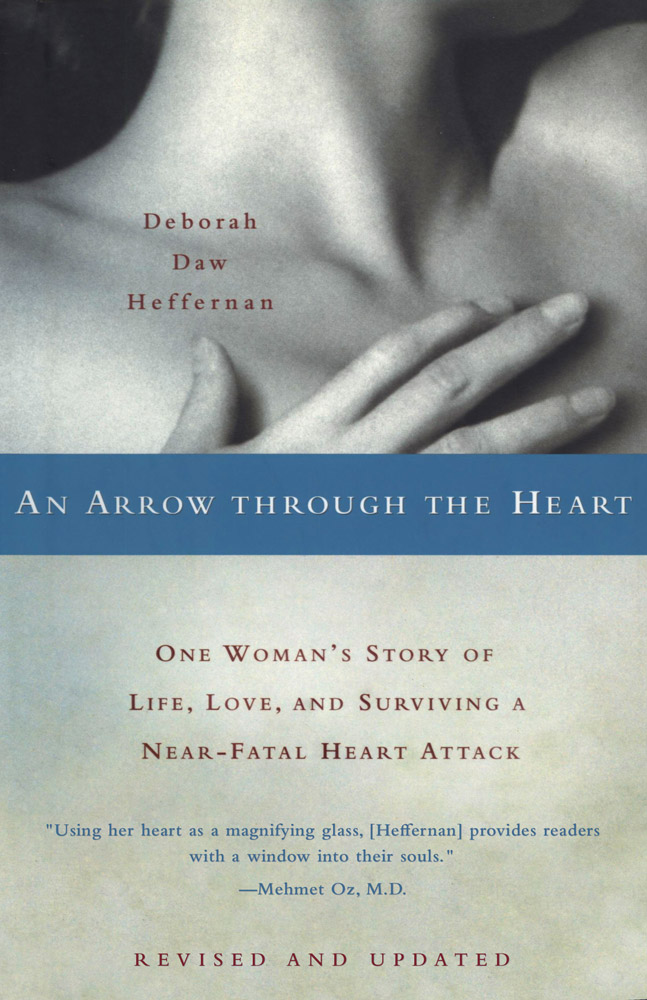ARE YOU A SCAD SURVIVOR?

WE ALL ASK: WHY ME?
A SCAD (spontaneous coronary artery dissection, or tear) can be an underlying cause of some heart attacks in young women—me, for example—and occasionally in men. But no one knows for sure why dissections are occurring in this age group with, for the most part, no cardiac risk factors. In 2002, on my way to the heart failure clinic at Mass General Hospital, I ran into Michael Jaff, DO, then a leading vascular specialist at MGH and today the president of Newton-Wellesley Hospital. At that point, I had given up hope of ever knowing, “Why me?”—why had one of my sturdy coronary arteries shredded out of the blue, in my gentle yoga class, during the prime of my life, and with my stellar health history? But Dr. Michael Jaff was still puzzling my case.
“I keep thinking about you, Deborah,” Michael said, my first SCAD in 1997 still fresh in his mind. “This is the best explanation that I can come up with. It may have been a genetic defect in the collagen of your LAD (left anterior descending artery). But this is just a guess.”
Dr. Jaff’s guess—well before anyone was doing research—may be all I will ever know. Certainly no one was offering any better explanation when I experienced a second SCAD in 2006, this time of the RCA (right coronary artery), culminating with a heart transplant five months later because I had sustained so much heart muscle damage from the two SCADs.
WHAT MATTERS MOST: TODAY WE ARE SURVIVING
At the time of my first SCAD and MI in 1997, I seemed to be one of a few isolated cases of SCAD in the US. I had not thought of ARROW as a coronary dissection story; I had thought it was a book alerting people to the prevalence of women and heart disease. Even though I was occasionally contacted by readers who had also dissected in their prime—ranging from a young mother in Ireland to a sturdy cowgirl in Montana—I had concluded that we few women were freaks of nature.
WRONG. Now we know that while surviving a coronary artery dissection is rare, experiencing one happens more often than we would like to think. I survived twice! Is there a sudden epidemic of SCADs? No. Spontaneous coronary artery dissections are still relatively rare, part of the great as-yet-unknown in cardiac research. But it used to be that only coroners diagnosed a SCAD; no one survived to talk about it. Today, women and men are surviving because they recognize the symptoms of a heart attack and receive swift, life-saving treatment. Quick diagnosis by patients themselves and ER clinicians is due largely to the education efforts of organizations listed on this site, as well as many other advocates—especially patient advocates.
Today we survivors actually have a name: SCADS (the second “s” is for “survivor”) or SCADsters, affectionately. And we SCADS are raising a ruckus for research, finally now under way. Still, no one to date has come up with a proven common cause for our spontaneous coronary artery dissections, aside from the obvious connective tissue disorders.

Available as an eBook at online retailers and at your local bookstore. All my book-related earnings are donated to cardiac causes. So, buy a book and save a life!
Dearest SCADS: You totally ROCK! You astound me with your courage and verve. You live with the possibility that your first SCAD may not be your last, whereas I had no idea. Had I known my risk during those nine years before the second dissection, I wonder if I would have dared to leave the house. You LIVE with knowledge I did not have. You dare to work, travel, exercise; you take care of your families. You amaze me. Truly. Thank you for all the work you are doing to increase visibility and research on SCAD. I am very glad you are HERE.
I DEFER TO THE EXPERTS BELOW TO KEEP US ALL INFORMED
Fellow SCADS, I urge you to identify yourself to any of these fine programs. Together, we just might learn, “Why me?”
- www.scadalliance.org—My favorite advocacy group, founded by a SCAD survivor. The SCAD Alliance website is kept current with information about all SCAD efforts; in fact, they kindly provided most of the web addresses below. The SCAD Alliance raises awareness as well as funds for research at any qualifying institution.
- www.scadresearch.org—A terrific website begun in 2011 following the death of the founder’s wife. SCAD Research largely funds the Mayo Clinic’s program.
- www.mayo.edu/research/centers-programs/spontaneous-coronary-artery- dissection-scad/overview—The Mayo Clinic in Rochester, MN has lead the gathering of national SCAD data.
- www.massgeneral.org/heartcenter/services/spontaneous-coronary-artery-dissection—Interdisciplinary research is conducted at the Institute for Heart, Vascular and Stroke Care at Massachusetts General Hospital in Boston, MA. I am in love with everyone here, obviously.
- www.scad.ubc.ca—Vancouver General Hospital, University of British Columbia for information about research in Canada.
- http://scad.lcbru.le.ac.uk/node/6—NIHR Leicester Cardiovascular Biomedical Research Unit for information about research in the United Kingdom and European Union.